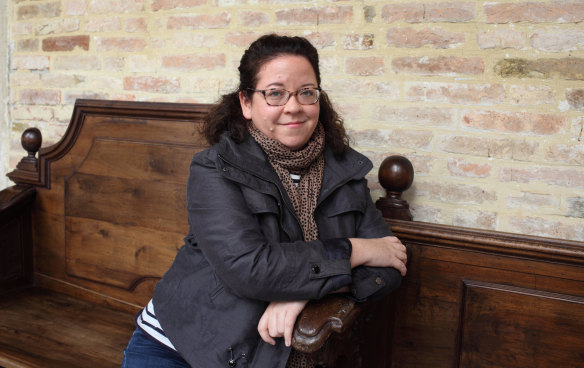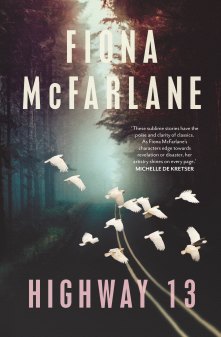By Jo Case
SHORT STORIES
Highway 13
Fiona McFarlane
Allen & Unwin, $32.99
Literary true crime has long been irresistible as a genre, from Truman Capote’s In Cold Blood to Helen Garner’s masterpieces of courtroom reportage. Fiona McFarlane operates in the opposite direction, incorporating true crime into literary fiction. But the high-low genre appeal is similar. The serial roadside abductions and murders of Highway 13 share a rough outline with those of Ivan Milat, the notorious serial killer who was an inspiration for Wolf Creek. The story’s victims, like Milat’s, were murdered in the 1990s and found buried in a state forest south of Sydney.

Fiona McFarlane incorporates true crime into literary fiction.Credit: Alamy Stock Photo
In her previous novel, The Sun Walks Down, McFarlane explored an iconic Australian cultural myth, the white child lost in the bush, as a locus for our anxieties. Set over seven days, it was narrated by a rotating cast. McFarlane, who has declared herself “addicted” to a true-crime podcast, My Favourite Murder, deliberately doesn’t centre the killer. Instead, her interest is in how the killer and his crimes affect various lives over time.
The effects are often achingly moving. For example, in the story Demolition a true-crime journalist interrogates the serial killer’s neighbour as his house is demolished, urging her to express appropriate relief. But she resists, associating the house with a previous inhabitant, a cherished childhood companion. “It’s not the Biga house, it’s the Lainey house.” The killer’s story may be culturally dominant, but in her life, it’s an inferior palimpsest.

Fiona McFarlane’s Highway 13 has twin preoccupations: story-making and true crime.
Most connections are similarly tangential: an actor playing the killer in a TV series, a man who visits the forest where victims were found. Even when the connections are closer, such as the story narrated by an immediate family member, or another featuring a crucial detective, the murders – and indeed, their perpetrator – remain peripheral. Highway 13 doesn’t so much investigate the psyche of a serial killer, or even the culture that created him (though it touches on both) as our preoccupation with crime as a mirror that reflects us.
The stories we weave and draw on to explain our lives, form our personalities and understand others are perhaps the truest subject of this book. For example, in Hunter on the Highway, a woman sees similarities between news reports and her boyfriend; her resulting scrutiny forces her (and us) to navigate competing narratives – of small kindnesses and potential danger signs.
Highway 13 rewards active reading. Its form, the interconnected story cycle, mirrors and deepens its twin preoccupations – story-making and true crime – with its gaps and connections, which invite a satisfying hunt. We read each story within the frame of the whole, watching details recur, perspectives clash or overlap and identify innocuous lines as chilling in context. For example, when the killer’s mother “vows never to have a baby”.
True-crime lovers similarly participate in building its narratives, by piecing together clues, reading in parallel with other texts and even becoming amateur investigators, as Rachel Monroe pointed out in Savage Appetites, her incisive book on women and true crime. We all understand crimes in a cultural context, as we search for motives based on familiar cultural scripts. Think of our search for the motivations of Donald Trump’s would-be assassin, looking at past political assassinations and school shooters.
Perhaps these pleasures are why Highway 13 is not alone: it joins novels such as Megan Nolan’s Ordinary Human Failings (partly inspired by the murder in Britain of toddler James Bulger) and Eliza Clark’s Penance (inspired by real teen murders) last year, and Laura Elizabeth Woollett’s Love of a Bad Man (narrated by the partners of Jim Jones and other notorious murderers) in 2016.
Podcast, a story set 30 years after Biga’s arrest, is written as a transcript of a true-crime feminist podcast recording, taped during a co-host’s honeymoon as new information emerges. In a way, it engages most intimately with the crimes, recapping their known details. But even then, it’s at a remove: though the hosts diligently read the names of victims in each episode (“we’re not interested in glorifying serial killers”), the crime is most important as a context for the hosts’ friendship.
True crime fandom “exists in a zone between privilege and vulnerability”, Monroe told The Guardian, “you need to be privileged enough not to live it in your daily reality”. I thought of this reading Halloween, a story that evocatively captures the devastation of losing someone to violent crime. Decades later, a (probable) victim’s brother endures a Texas halloween, with its pageantry of death. A “festive flutter of police tape” sends a chill down his spine and he politely ignores an entreaty from a costumed neighbour. He “only knows one scary story, and he won’t tell it”.
Highway 13 is vibrant and intricately crafted, from its taut sentences and pitch-perfect psychological observations to its very order of stories: the final image of the collection powerfully mirrors the trajectory of crimes that don’t yet exist. “He waits. The passenger door swings open, as if by magic.”
The Booklist is a weekly newsletter for book lovers from books editor Jason Steger. Get it delivered every Friday.